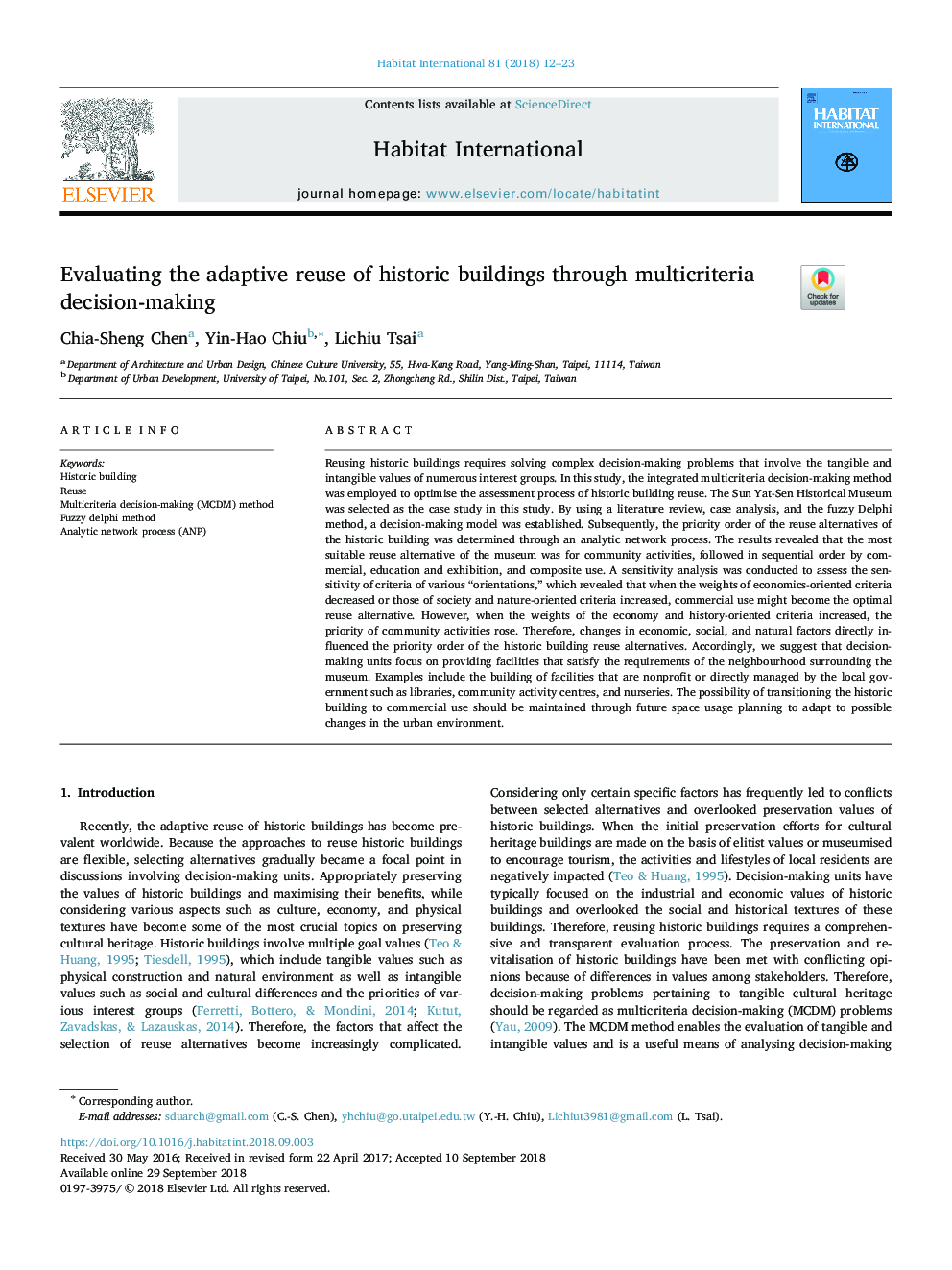| Article ID | Journal | Published Year | Pages | File Type |
|---|---|---|---|---|
| 11011905 | Habitat International | 2018 | 12 Pages |
Abstract
Reusing historic buildings requires solving complex decision-making problems that involve the tangible and intangible values of numerous interest groups. In this study, the integrated multicriteria decision-making method was employed to optimise the assessment process of historic building reuse. The Sun Yat-Sen Historical Museum was selected as the case study in this study. By using a literature review, case analysis, and the fuzzy Delphi method, a decision-making model was established. Subsequently, the priority order of the reuse alternatives of the historic building was determined through an analytic network process. The results revealed that the most suitable reuse alternative of the museum was for community activities, followed in sequential order by commercial, education and exhibition, and composite use. A sensitivity analysis was conducted to assess the sensitivity of criteria of various “orientations,” which revealed that when the weights of economics-oriented criteria decreased or those of society and nature-oriented criteria increased, commercial use might become the optimal reuse alternative. However, when the weights of the economy and history-oriented criteria increased, the priority of community activities rose. Therefore, changes in economic, social, and natural factors directly influenced the priority order of the historic building reuse alternatives. Accordingly, we suggest that decision-making units focus on providing facilities that satisfy the requirements of the neighbourhood surrounding the museum. Examples include the building of facilities that are nonprofit or directly managed by the local government such as libraries, community activity centres, and nurseries. The possibility of transitioning the historic building to commercial use should be maintained through future space usage planning to adapt to possible changes in the urban environment.
Related Topics
Social Sciences and Humanities
Social Sciences
Development
Authors
Chia-Sheng Chen, Yin-Hao Chiu, Lichiu Tsai,
